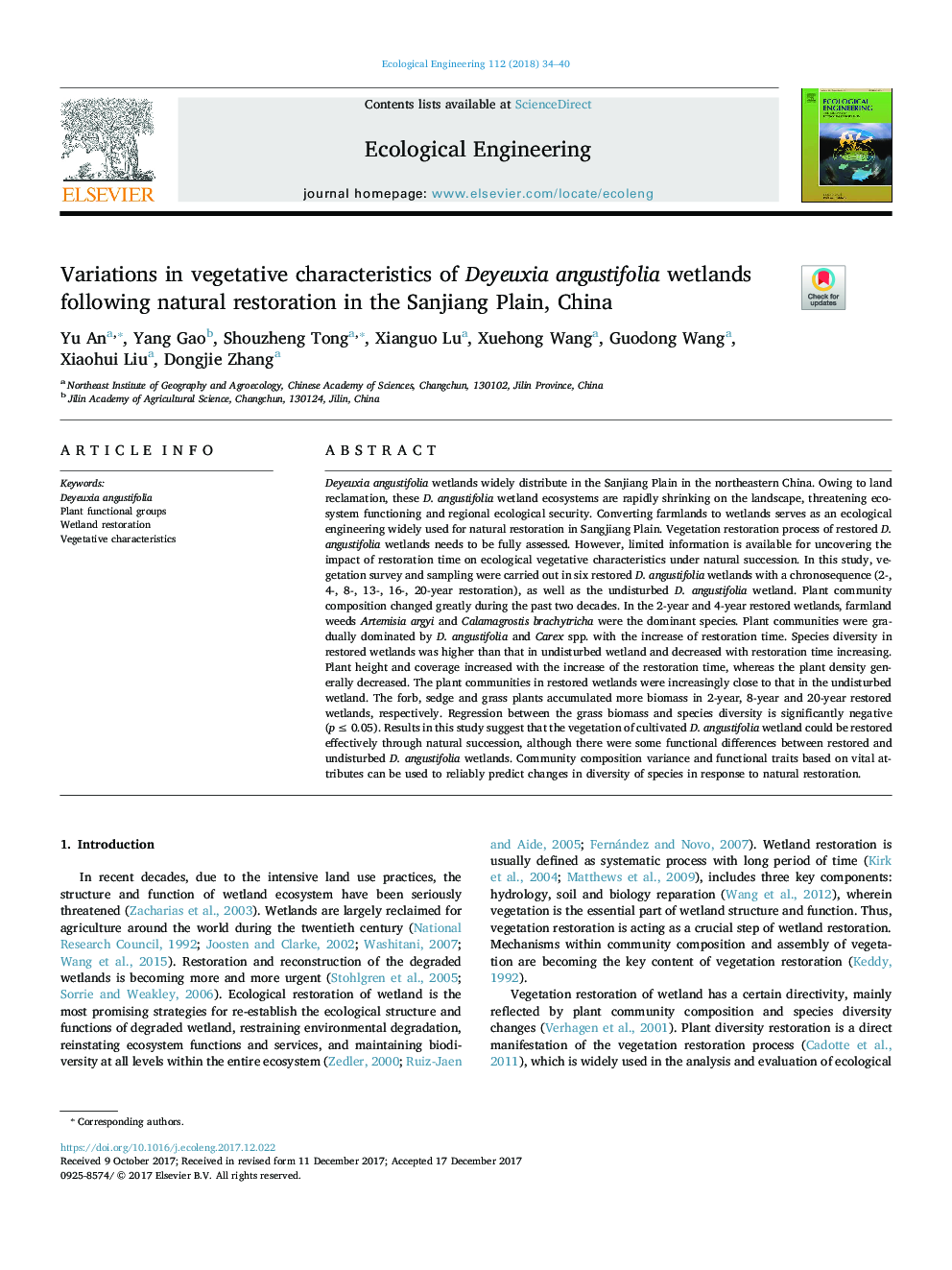| Article ID | Journal | Published Year | Pages | File Type |
|---|---|---|---|---|
| 8848051 | Ecological Engineering | 2018 | 7 Pages |
Abstract
Deyeuxia angustifolia wetlands widely distribute in the Sanjiang Plain in the northeastern China. Owing to land reclamation, these D. angustifolia wetland ecosystems are rapidly shrinking on the landscape, threatening ecosystem functioning and regional ecological security. Converting farmlands to wetlands serves as an ecological engineering widely used for natural restoration in Sangjiang Plain. Vegetation restoration process of restored D. angustifolia wetlands needs to be fully assessed. However, limited information is available for uncovering the impact of restoration time on ecological vegetative characteristics under natural succession. In this study, vegetation survey and sampling were carried out in six restored D. angustifolia wetlands with a chronosequence (2-, 4-, 8-, 13-, 16-, 20-year restoration), as well as the undisturbed D. angustifolia wetland. Plant community composition changed greatly during the past two decades. In the 2-year and 4-year restored wetlands, farmland weeds Artemisia argyi and Calamagrostis brachytricha were the dominant species. Plant communities were gradually dominated by D. angustifolia and Carex spp. with the increase of restoration time. Species diversity in restored wetlands was higher than that in undisturbed wetland and decreased with restoration time increasing. Plant height and coverage increased with the increase of the restoration time, whereas the plant density generally decreased. The plant communities in restored wetlands were increasingly close to that in the undisturbed wetland. The forb, sedge and grass plants accumulated more biomass in 2-year, 8-year and 20-year restored wetlands, respectively. Regression between the grass biomass and species diversity is significantly negative (pâ¯â¤â¯0.05). Results in this study suggest that the vegetation of cultivated D. angustifolia wetland could be restored effectively through natural succession, although there were some functional differences between restored and undisturbed D. angustifolia wetlands. Community composition variance and functional traits based on vital attributes can be used to reliably predict changes in diversity of species in response to natural restoration.
Related Topics
Life Sciences
Agricultural and Biological Sciences
Ecology, Evolution, Behavior and Systematics
Authors
Yu An, Yang Gao, Shouzheng Tong, Xianguo Lu, Xuehong Wang, Guodong Wang, Xiaohui Liu, Dongjie Zhang,
